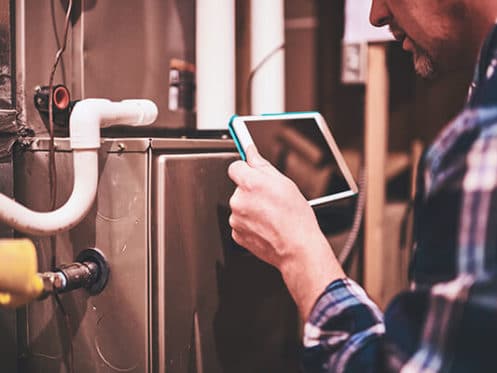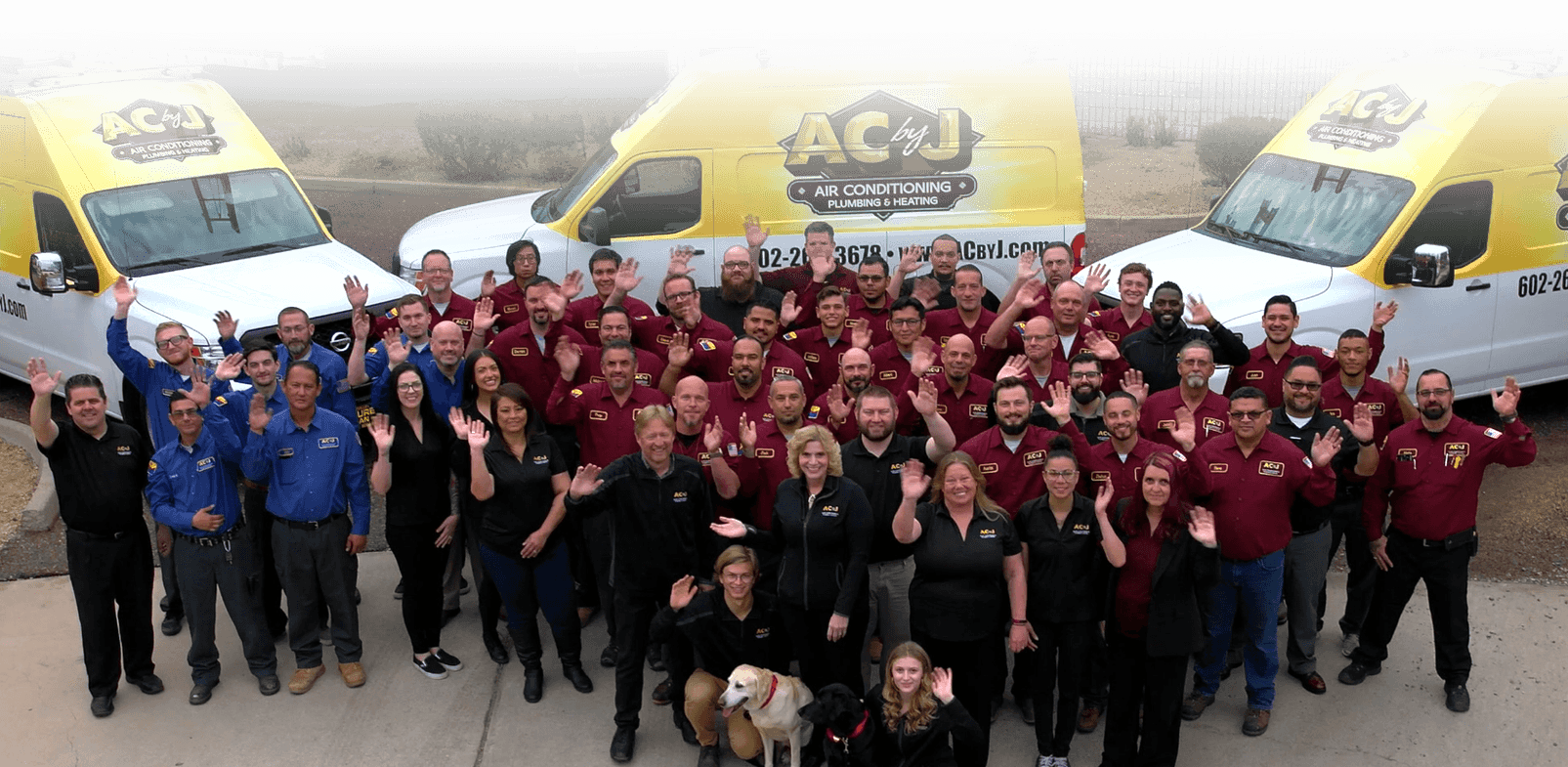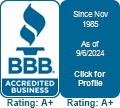It’s easy to take for granted the important service your furnace provides your home. However, when the weather turns cold and your furnace acts up, everything stops while you try to figure it out. Whether you want better efficiency, or you’re dealing with a problem, understanding how your furnace works will help you get more from your unit. Take a few minutes to learn how it heats your home, the major furnace components, and a few key factors when considering a new unit.
Heating Cycle 101
Let’s start by discussing the process through which your furnace heats your home. All furnaces have to generate heat at the start of the cycle. Then, they move that heat into your home.
There are two broad types of furnaces available. The least common are electric resistance element furnaces, which use electricity to generate heat. More commonly, you’ll find a fuel-burning furnace. These burn natural gas, propane, or oil, which produce a hot exhaust. It’s that exhaust which is then used to heat the air that will heat your home.
Once the furnace generates the heat, it circulates air from within your home through the system. That air absorbs the heat the furnace generates, and the furnace then pushes the heat back out into your home. To heat your home evenly, it creates different pressures, with your output vents having positive pressure and your return registers having negative pressure. These pressures cause the air to move to equalize around your home, distributing the heat. Now, let’s look at some components within your furnace and what they do.
Thermostat
Your thermostat is what starts the entire process by signaling to the furnace when to turn on and off. Most thermostats have a service life of 10 to 15 years; beyond that time, their temperature sensitivity begins declining, affecting your furnace’s performance. During its service years, you’ll need to change the batteries regularly, unless it’s tied directly into your electrical system. For best performance, plan to change them twice a year, usually at the same time as your system maintenance.
Control Board
While the thermostat starts and stops your furnace, it’s the control board that makes it cycle through the stages. All the sensors your furnace has, for both safety and functional control, report back to the control board. This circuit board interprets those signals and initiates or terminates various actions, such as starting or stopping fuel flow.
Igniter
There are three different igniters you may find among modern furnaces. The most common is a hot surface igniter, much like the filament in an incandescent bulb, which gets hot enough to ignite the fuel.
Then there’s the direct spark igniters, which are similar to spark plugs. As the fuel enters the burn chamber, the igniter uses an electrical charge to create a spark.
The oldest kind of igniter is the pilot light, which you may still find in some models. This uses a small amount of fuel to keep a small flame burning all the time. The pilot light keeps the unit ready to light without the need for another component to start or warm up.
Burner
The burner creates even, controlled flames as the fuel travels into the burn chamber. There are different options available, depending on the model you choose.
Flame Detector
The flame detector is a critical safety sensor for your furnace, helping control the proper flow of fuel. It senses the heat in the burn chamber, and if there isn’t enough, it stops the fuel. This helps prevent too much unconsumed fuel from building up in the burn chamber, which could lead to a dangerous explosion.
Circulating Fan
The circulating fan is usually a large wheel, and it has a dedicated fan motor. It’s the sole component responsible for creating the air movement your system requires. There are three types of fans that you may encounter.
The basic fan has a single speed and is either on or off. More efficient models have two-stage fans, which offer two speeds to help conserve energy when you don’t need as much airflow. High-efficiency furnaces tend to have variable-speed motors, also known as ECMs. These can tightly control the speed of the fan based on several factors to properly balance the needs of your home.
Air Filter
Every furnace also has a filter to keep out airborne contaminants. Such nuisances may include dust, dander, hair, and more. If run without a filter, your furnace will quickly experience airflow restrictions at the heat exchanger and circulating fan. Some will also collect in your ducts, further reducing your system’s efficiency.
Heat Exchanger
The heat exchanger is responsible for heating the air moving through the system. The hot exhaust created in the burn chamber travels through the heat exchanger before venting outside. In high-efficiency systems, you’ll have two heat exchangers to allow the air to absorb more heat.
It’s important to have your heat exchanger inspected annually to ensure that there aren’t any cracks. Cracks are typically caused by the system overheating, which happens when too little air circulates. These cracks create the opportunity for dangerous carbon monoxide gas to leak into your home. The inspection is typically included in annual furnace maintenance services.
Model Options
When selecting your furnace, you’ll have to choose the right size and the right type of furnace design. An installation professional will help you determine the best-sized furnace for your home. The type of furnace, much like the type of fan, works to determine the unit’s efficiency.
Basic models come with a single-stage burner which, like the single-stage fan, is either on or off. This means it always creates a certain amount of heat, regardless of the needs at the moment. The next step up is the two-stage furnace, which has two differently sized flames available, depending on the heating requirements.
Modulating furnaces can more tightly control the amount of flame, based on the needs of your home. When combined with a second heat exchanger and an ECM, these create the most efficient systems.
Understanding Efficiency
When you look at a furnace’s efficiency rating, you’ll see it listed as an AFUE rating. This stands for Annual Fuel Utilization Efficiency. This rating is a percentage of how much of the fuel consumed turns into heat in your home.
The lowest efficiency permitted for new furnaces is 80%. This means that 20% of the heat generated escapes through your flue. High-efficiency models start at about 90%, but they may achieve up to 98% efficiency.
Higher-efficiency models use less fuel to heat your home to the same level. This translates into lower utility bills. However, the bigger impact is less exhaust venting into the air, reducing the environmental impact of heating your home. Furthermore, high-efficiency models tend to keep the temperature of your home more consistent, improving your overall comfort.
Residents around Scottsdale have trusted AC by J to keep their homes comfortable and safe since 1983. Our customers depend on us for reliable heating and air conditioning installation, repair, and maintenance, combined with a range of professional plumbing services. Call to schedule your appointment for furnace repair or maintenance with one of our NATE-certified technicians today.






